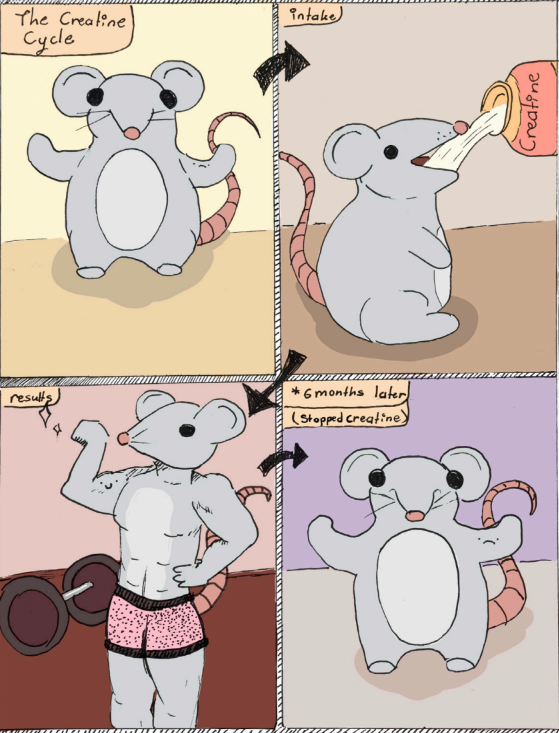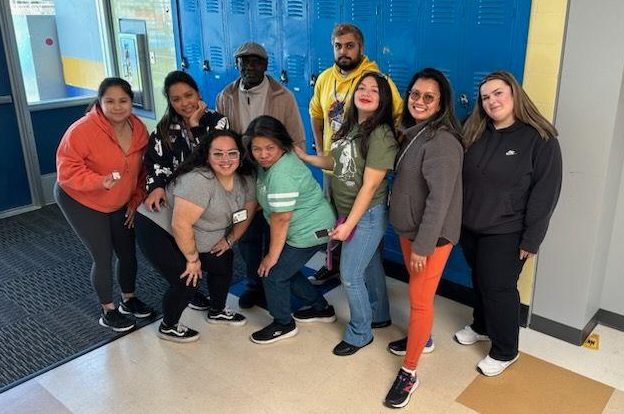As humans of an advancing society, we tend to lean towards social media in favor of social interaction due to its easy release of dopamine and overstimulation of color and content. Due to this, social media as a form of communication, interaction, and entertainment comes as second nature. Even though social media is a great outlet for connecting with people, it has several negative effects such as addiction, lower self-esteem, and a false sense of reality.
Starting from February 7th to March 6th, three editors of The Monarch Times agreed to sacrifice social media for a month. During this period, the editors recorded and reported any changes in mood, behavior, and phone usage tendencies.
The courageous individuals chosen were Itzel Esquivel Ramirez, Myldret Vazquez, and Layla Black. All three use social media every day to connect to others or for leisure. Each of the subjects had to disable or uninstall all social media apps from their phone to identify the negative effects of social media and figure out how to cope without it.
Before the challenge began, Esquivel Ramirez relied on social media to distract herself from negative emotions, stressors, and daily hassles. Social media helped Esquivel Ramirez suppress her negative feelings. Spending 10 hours on social media everyday. During the challenge, Esquivel Ramirez mentioned feeling happier and sleeping better without allowing social media to determine that for her. Taking social media away took the distraction away from her emotions: “I was having problems … with my emotions because I depend on social media to distract me from [them]. So I gave up because I couldn’t take my emotions anymore” Esquivel Ramirez stated. Her participation in the challenge ended within the first two out of four weeks, due to her struggle with the lack of digital communication and escapism. She is still making attempts to be in control of how she feels and her screen time. Esquivel Ramirez’s screen time averaged out at 13.7 hours per day before the challenge. Although she dropped out of the challenge, her screen time decreased to 6.8 hours per day. After realizing her “emotions depend so much on [her] phone” her hours dropped to “a good 6” Esquivel Ramirez mentioned.
Before the challenge, Vazquez relied greatly on social media as a form of escape from stressful life events. Vazquez’s social media screen time added up to about 4 hours a day, which is common for students. Vazquez believes that social media’s constant production of content distracted her from herself and her relationships.
This experience away from social media gave Vazquez a chance to explore her hobbies and connect to herself and her emotions. “I feel like I’m having a genuine conversation,” Vazquez added, referencing the people who kept her mobile number and texted her regularly. The leisurely enjoyment of scrolling through colorful and captivating content brought Vazquez’s screen time to an average of 6.5 hours per day before the challenge, peaking at 10 hours. After the challenge, Vazquez tells us she is now at 3.8 hours per day. “Instead of programmed emotions from Instagram, I expressed real feelings,” she remarked.
Black enjoyed the vivid and comedic content of Instagram before quitting social media. Exchanging reels with friends or other silly posts was mainly what he spent time on during those days. Even before the challenge, he tried limiting the amount of time he spent on social media because it negatively impacted his time management and work progress. These limits would sometimes be broken or misused due to his desire for amusement from social media. Black remarked: “[Instagram blocked] my emotions. I always felt empty or nothingness from when I’d scroll.”
He emphasizes how all the posts and content coming from celebrities or friends he consumed seemed repetitive and boring. During the challenge, Black began to read more, and his productivity and time management increased. His interactions or events with friends felt more “in the moment.” Black felt more natural emotions. He found it satisfying to feel sad, happy, or simply himself and nothing more. “[There were] times when I felt sad or depressed and instead of immediately trying to change that, I opened up to it,” he said. Pre-challenge, his screen time was around 5.6 hours per day, peaking at 7 hours. Post-challenge, his screen time dropped to 3 hours per day. “I’m never going back,” he claimed.
All three participants shared mutual difficulty when needing video references from YouTube for homework or other help. They also expressed a struggle to keep up with friends on social media who use social media as their main method of communication. Due to this, the group found it challenging to suppress their feelings of missing out.
According to a 2023 Gallup poll about teens’ social media use, American teens from 13 to 19 years old spend on average 4.8 hours a day on social media. 17-year-olds use social media the most, spending 5.8 hours on social media per day. On average, girls spend 5.3 hours on social media while boys spend 4.4 hours on social media per day. The most used social media apps were YouTube and TikTok. By contrast, American adults spend 2.3 hours on social media per day, according to an investigation from Forbes.
Social media is all around us. It caters to what we want to see and how we want to see it, which makes it so attractive. There’s no doubt that this tug-of-war between real life and online life will continue to complicate people’s daily lives. However, being in control of how social media is used and setting up healthy limits can make a difference. Overall, although social media has negative consequences, it’s possible to moderate one’s social media usage and reap its benefits.














